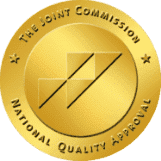- About Us
- Blog
- Areas We Serve
- Virtual IOP
- Our Programs
- Tour
- Mental Health Treatment
Stages of Alcoholism
- Home
- Stages of Alcoholism
More About Substances
What Happens When Alcohol Use Gets Out of Hand?
Introduction
Alcoholism doesn’t happen overnight. The development of alcohol addiction may not have appeared at first. Gradually, however, alcohol addiction may develop, resulting in stages that escalate the drinking problem until the addiction takes over all aspects of life. We’re going to take a look at what alcoholism is, what the stages of alcoholism are, and what kinds of effects alcohol use can have on physical and psychological well-being.
What is Alcoholism?
You may have heard of alcoholism referred to as alcohol use disorder. This term, abbreviated AUD, refers to a range of drinking disorders that cause harm to the body, including alcohol abuse and alcoholism.1 These two conditions were previously diagnosed separately, but in 2013, the 5th edition of the Diagnostic and Statistical Manual of Mental Disorders (DSM–5) by the American Psychiatric Association merged alcohol abuse and alcohol dependence into the one diagnosis of alcohol use disorder.2
Levels of Alcohol Use Disorder(AUD)
AUD is classified by severity levels: mild, moderate, and severe. These are not the same as the stages of alcoholism. According to the DSM-5, a person must have a minimum of 2 out of 11 symptoms to be diagnosed with AUD. The symptoms must be present within 12 months. The severity levels of AUD and the number of symptoms required to be diagnosed at each level are:
- Mild – 2 to 3 symptoms
- Moderate – 4 to 5 symptoms
- Severe – 6 or more symptoms
The severe diagnosis level is equivalent to alcohol dependence, also called alcoholism.
AUD in the DSM-5
These are the symptoms used to diagnose AUD according to the DSM-5:
“In the past year, have you:
- Had times when you ended up drinking more, or longer, than you intended?
- More than once wanted to cut down or stop drinking, or tried to, but couldn’t?
- Spent a lot of time drinking? Or being sick or getting over other aftereffects?
- Wanted a drink so badly you couldn’t think of anything else?
- Found that drinking – or being sick from drinking – often interfered with taking care of your home or family? Or caused job troubles? Or school problems?
- Continued to drink even though it was causing trouble with your family or friends?
- Given up or cut back on activities that were important or interesting to you, or gave you pleasure, to drink?
- More than once gotten into situations while or after drinking that increased your chances of getting hurt (such as driving, swimming, using machinery, walking in a dangerous area, or having unsafe sex)?
- Continued to drink even though it was making you feel depressed or anxious or adding to another health problem?
- Had to drink much more than you once did to get the effect you want? Or found that your usual number of drinks had much less effect than before?
- Found that when the effects of alcohol were wearing off, you had withdrawal symptoms, such as trouble sleeping, shakiness, restlessness, nausea, sweating, a racing heart, or a seizure? Or sensed things that were not there?2
Signs of Alcoholism
The diagnostic criteria above list many of the signs of alcoholism. The more signs a person has, the more likely that they suffer from an alcohol use disorder. Also, the following signs and symptoms may indicate that a person has severe AUD or alcoholism:6
- Repeated denial of having a drinking problem
- Mood swings and personality changes
- The frequent smell of alcohol on the breath
- Weight loss
- Dry skin, brittle nails and hair resulting from dehydration
- Poor hygiene
- Broken capillaries on the face and nose
- Yellow eyes and skin due to liver damage
Risk Factors for AUD
Research has shown that genetics account for about half of the risk for developing an AUD. Environmental factors, as well as the connection between genetics and environment, account for the other half.3 A 2013 article reported that two genes that affect the metabolism of alcohol by the body have the strongest impact on the risk for AUD.4 Several other genes also impact AUD or factors related to the risk for AUD. Researchers have not found an “alcoholism gene” however.
According to the 2019 National Survey on Drug Use and Health (NSDUH), 14.1 million adults age 18 and older had AUD. This accounts for about 5.6% of all adults in the United States. Of those with AUD, 8.9 million were men and 5.2 million were women.
The 2018 NSDUH found that 7.9% of adults with AUD received treatment. Also, the 2019 survey estimated that 414,000 teenagers age 12 to 17 had AUD, including 163,000 males and 251,000 females. The overall number accounts for about 1.7% of this age group in the United States.5
Stages of Alcoholism
Many people use alcohol with meals or at social engagements, without increasing the risk of dependence. Some people, however, begin to use alcohol more often and for more personal reasons. Alcoholism has several stages, based on the level and frequency of alcohol consumption. These stages are:7
Pre-Alcoholism
In this first stage of alcoholism, the transition from a social drinker to an emotional drinker begins. Drinking to relieve stress and to cover up or avoid emotions rather than facing a stressful situation may occur more frequently. Drinking alone and out of boredom may also begin. While in the pre-alcoholic stage, drinking more alcohol more often starts.
Early Alcoholism
Once in the early stage of alcoholism, the increase of alcohol continues more frequently. At this stage its possible to begin to feel the health effects of increased alcohol intake, including depression, anxiety, and insomnia. Other problems that are associated with drinking may begin at this stage, including:
- Binge drinking – a binge drinker may not drink alcohol every day, but when they do, they drink large amounts of alcohol over a long period of time, possibly days
- Blackouts – a person who drinks a large amount of alcohol may experience memory loss as a result. This can lead to risky behaviors, as the brain no longer can consciously keep a check on actions.
- Drinking and driving – The level of alcohol intake at this stage may cause the misjudgment of how much alcohol they have had and how drunk they are, leading to driving while drunk and legal problems as a result
- Social problems – Early alcoholics may also experience relationship problems, loss of friends, decreased social activity, and difficulty talking to people in general
Middle Alcoholism
The middle stage of alcoholism is the start of alcohol dependence. Drinking becomes more important than other activities, and the effects of drinking may be experienced in a more direct and damaging way. Missing work due to drinking or starting to drink at work may occur, leading to job loss. Drinking may also interfere with family and social obligations. There also may be some acceptance of the problem and attempts to quit alone, often unsuccessfully.
Late Stage or End-Stage Alcoholism
At this stage of alcoholism, physical and psychological dependence on alcohol has occurred. Drinking occurring all day and, in all situations, even if it is not appropriate appears in this stage. During this stage, alcohol has taken a toll on life and health. People at this stage are unable to quit drinking without experiencing significant withdrawal symptoms, including seizures, severe depression, and panic attacks. The liver begins to show signs of advancing disease and the abdomen may become bloated and hard in the area of the liver. Continued drinking at this stage will lead to severe health problems and possible death.
Recovery
During any of the above stages, alcoholism treatment can begin to enter the recovery stage. This stage is usually possible with help from medical professionals and either an inpatient or outpatient treatment program. Once entering a program and completing the detoxification process, the recovery stage begins. Since the risk of relapse is very high, the recovery stage is considered to last the rest of your life.
Effects of Alcoholism
People who have AUDs for long periods of time run the risk of developing some significantly damaging long term effects. These include:
Delirium Tremens
Called “the DTs”, delirium tremens is a severe form of alcohol withdrawal that can occur when someone in the middle or late stages of alcoholism stops drinking. The symptoms of delirium tremens are severe and require medical management. These symptoms include:
- Visual and auditory hallucinations
- Whole-body tremor
- Vomiting
- High blood pressure
- Excessive sweating
- Delirium, or confusion
- Irritability
- Restlessness
- Sudden mood changes
- Insomnia or deep sleep
- Loss of appetite
- Seizures
- Chest or stomach pain
- Fever
Wernicke-Korsakoff Syndrome
This condition consists of two serious medical diagnoses that affect the brain:9
Wernicke’s Encephalopathy: This is a severe, short-term condition that confuses, impairs muscle coordination, and paralyzes the nerves that move the eyes
Korsakoff’s Psychosis: This is a chronic condition that involves memory and learning problems. People with this condition have significant short term and milder long- term memory problems, difficulty with coordination, and trouble walking
Treatment for Alcoholism
While in any of the above stages of alcoholism, recovery can happen with treatment. Effective treatment programs are offered on either an inpatient or outpatient basis, depending on the severity of the condition. Treatment usually begins with medically supervised detoxification, or “detox”, during which alcohol is removed from the body. Following detox, treatment may include:
Medications
Several medications may be used during the treatment of AUD to help reduce cravings for alcohol or to create an aversion to alcohol. The medications currently approved for use during treatment for alcoholism in the United States are:
Disulfiram
Disulfiram – also known as Antabuse®, this drug produces increased sensitivity to alcohol in the body. Adverse symptoms such as headaches and nausea result when a person drinks alcohol
Acamprosate
Acamprosate – used during detoxification, this drug stabilizes the chemical signals in the brain that are normally disrupted by withdrawal symptoms
Naltrexone
Naltrexone – this anti-opioid drug helps to reduce cravings for alcohol
Behavioral Treatment
Addressing the root causes of alcoholism is very important in helping to make sure that relapse doesn’t occur after treatment is completed. Behavioral treatments may include:
Cognitive Behavioral Therapy – counseling that helps change the behaviors associated with drinking
Marital and Family Counseling – therapy that involves family members and helps to repair relationships and family dynamics affected by alcohol use
Motivational Enhancement Therapy – builds self-confidence and motivation to change drinking habits
Support Groups
People who struggle with alcohol use often benefit from the support of others who have been through the same thing. Support groups and 12 step programs such as Alcoholics Anonymous help provide encouragement and accountability to stay sober.
The later the stage of alcohol use, the longer treatment will take. However, even being in the late stages of alcoholism means you can recover from alcohol addiction. If you or someone you love is struggling with alcoholism, encourage them to seek help as soon as possible.
Resources
- https://medlineplus.gov/alcoholusedisorderaud.html
- https://www.niaaa.nih.gov/publications/brochures-and-fact-sheets/alcohol-use-disorder-comparison-between-dsm
- https://www.niaaa.nih.gov/alcohols-effects-health/alcohol-use-disorder/genetics-alcohol-use-disorder
- https://www.ncbi.nlm.nih.gov/pmc/articles/PMC4056340/
- https://www.niaaa.nih.gov/publications/brochures-and-fact-sheets/alcohol-facts-and-statistics
- https://www.verywellmind.com/signs-and-symptoms-of-alcoholism-66520
- https://www.healthline.com/health/stages-alcoholism
- https://alcoholicsanonymous.com/understanding-the-stages-of-alcoholism/
- https://pubs.niaaa.nih.gov/publications/aa63/aa63.htm
Iris Healing® strives to be diligent and prompt in updating the information available on our website. Please note, however, that our treatment modalities and protocols are subject to change at any time. For the most up-to-date details regarding our treatment offerings or other protocols, please contact us: (844)663-4747




